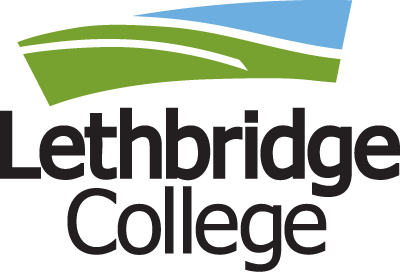 This fall, I got to be a part of what was one of the most wonderful writing experiences I’ve had during my time at the college – helping put the story of the college’s Blackfoot name down on paper.
This fall, I got to be a part of what was one of the most wonderful writing experiences I’ve had during my time at the college – helping put the story of the college’s Blackfoot name down on paper.
I really was more of a scribe than the storyteller. Our Kainai Kaahsinnoonik (Grandparent) Peter Weasel Moccasin gave the name of Ohkotoki’aahkkoiyiiniimaan, or Stone Pipe, to the college in a ceremony on Oct. 22. In the Blackfoot tradition, this gift is usually given using just spoken words – but we at the college knew we wanted to preserve the words and the meaning of the name for future generations to know and understand.
So Peter told the story to Marcia Black Water, coordinator of Indigenous Services, a 2004 grad of the college’s General Studies program, and one of his daughters. She passed her notes on to me, and I had the privilege of turning it into the story at right.
We had the cards with this story printed in advance and ready to hand out at the end of the moving naming ceremony that launched the college’s Indigenous Celebration Day. But the quiet, confident and joyful voice of Peter telling this story in his own words – a story that evokes the image of strength and straight paths, and celebrates promises made with honesty and integrity – still rings in my ears. I am so proud to work at a place that, as our president, Dr. Paula Burns, said, “recognizes the importance of Indigenous education and the vitally important perspectives that the local Indigenous community bring to the work that we do here every day.”
So much of this issue of Wider Horizons seems to be about celebration – the opening of our new Trades, Technologies and Innovation Facility, the fun and festivities of our 60th anniversary at Coulee Fest, the raising of the Blackfoot Confederacy flag and the receiving of our Blackfoot name. It has been a joyful edition to create, and we hope you find joy and celebration as you read it.
The story of Lethbridge College’s Blackfoot name
Ohkotoki’aahkkoiyiiniimaan – or stone pipes – are used in sacred ceremonies of the Blackfoot people to make an offering to Iihtsipaatapi’op, the Source of Life. The pipe kept and keeps the Blackfoot people at peace. The offering of a stone pipe can occur between a person and Iihtsipaatapi’op, between two people, or among two groups of people. It is a promise or a peace bond made with the honesty and integrity needed to fulfill the commitment. During the offering of the pipe, everyone involved must uphold and carry out the promises made.
It is not certain where or how the first pipe of the Blackfoot people came to be. Oral stories refer to a dream in which direction was given of which materials to use and where to find them. One of the places the stone used in the pipe is found is near the land where Lethbridge College sits, within the coulees and along the river bottoms that flow into the Old Man and Bow rivers.
In this coulee, a chunk of the ground would be dug up and then broken up on a nearby hard rock to get to the raw stone material within. Once the raw stone was revealed, it would be shaped to a likened form without any cracks. Next, the stone would be baked and painted with crushed red willow. The pipe stem would be made from ashwood, which is found in Crow territory and is similar to a chokecherry branch.
In a process that requires patience, these two raw materials were then shaped into one. The stone starts out rough and becomes refined. The pipe stem must be made straight and unbreakable, for when formed correctly, it represents a straight path – a good path. Once dry, it is unbreakable. These two pieces together form the stone pipe, which is a connection to Iihtsipaatapi’op and a promise that keeps us together.


